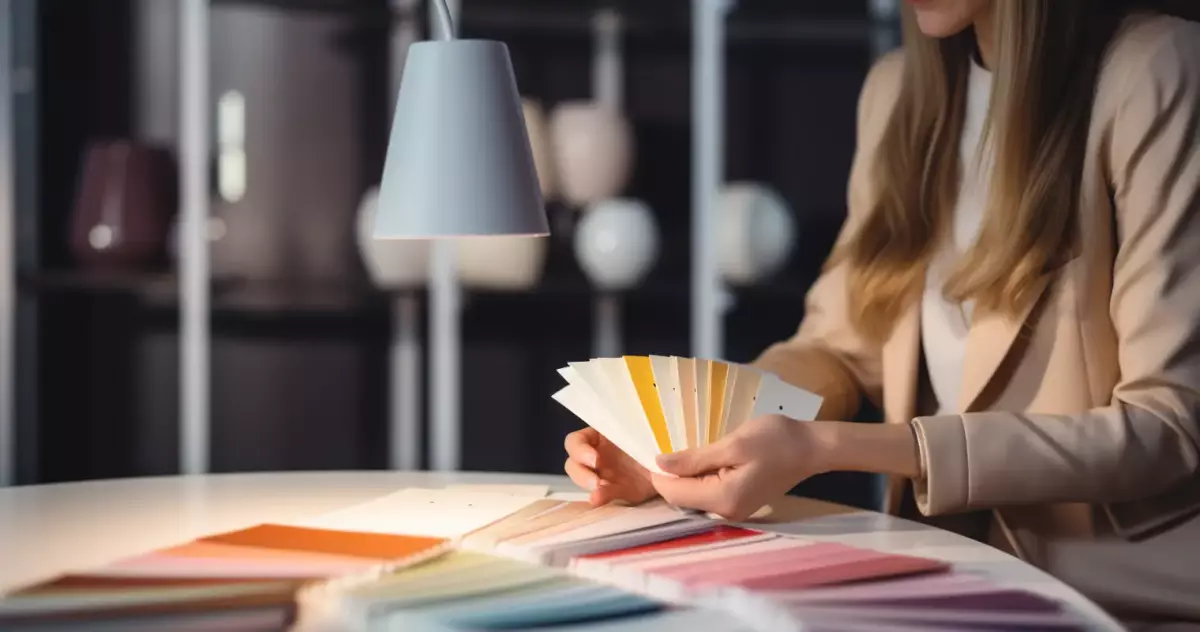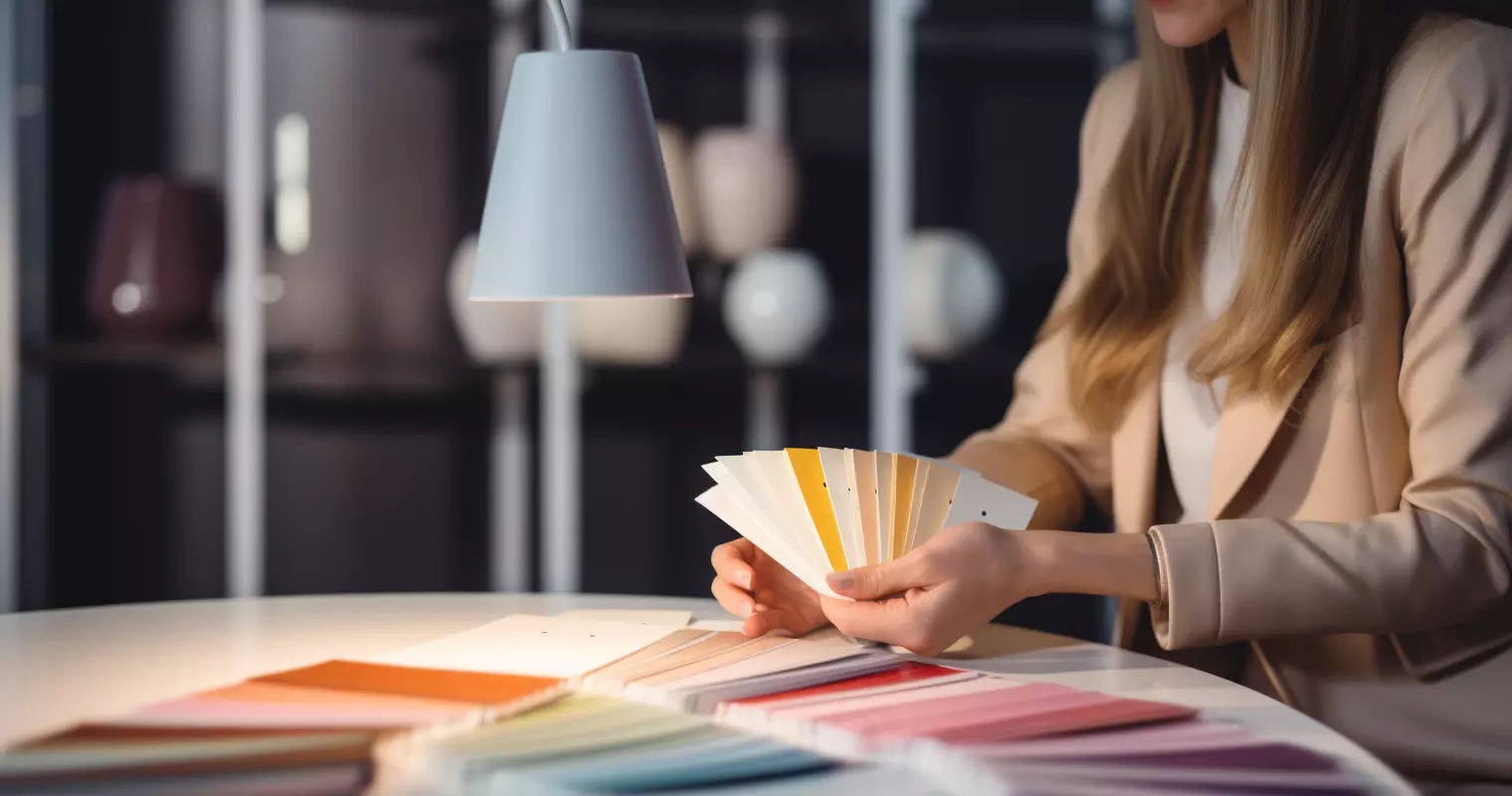Ever found yourself marveling at a beautifully designed room and wondering, “What magic did the designer weave here?” Well, that magic is the result of expertise, creativity, and a deep understanding of space. What Does An Interior Design Do? It’s not just about choosing the right color palette or placing furniture aesthetically. It’s about creating environments that enhance the quality of life and culture of the occupants.
Understanding the Role of an Interior Designer
Ever walked into a room and felt an immediate sense of comfort and style? That’s the magic touch of an interior designer. These professionals don’t just pick out pretty curtains or decide the color of your walls. Their role is much more intricate and impactful.
What Does An Interior Design Do? At its core, interior design is about creating environments that enhance the quality of life and culture of the occupants. It’s a blend of art and science, where aesthetics meet functionality.
Now, you might be thinking, “Isn’t that what decorators do?” Not quite. While both interior designers and interior decorators focus on the aesthetics of a space, designers also consider the functionality, safety, and architecture of the room. It’s like comparing a chef to a food stylist; both deal with food, but their roles and expertise differ.
The importance of interior design can’t be overstated. A well-designed space can boost productivity in an office, promote relaxation in a home, and enhance the customer experience in a commercial setting.
 Caption: A beautifully designed room that showcases the expertise of an interior designer.
Caption: A beautifully designed room that showcases the expertise of an interior designer.
The Design Process: From Concept to Completion
Every masterpiece starts with an idea, and in the world of interior design, this idea evolves through a meticulous process.
The journey often begins with an initial consultation. Here, the designer meets with the client to understand their needs, preferences, and vision for the space. It’s like a first date but with fabric swatches and color palettes.
Once the designer has a clear understanding, they move on to creating mood boards and design sketches. Think of this as the storyboard of a movie. It gives a visual representation of the final product, ensuring both the designer and client are on the same page.
Finally, the real fun begins - the selection of materials, colors, and furnishings. This is where the space truly comes to life. The designer chooses elements that not only look good but also serve a purpose, ensuring the space is both beautiful and functional.
 Caption: The interior design process involves careful planning and coordination.
Caption: The interior design process involves careful planning and coordination.
Key Skills Every Interior Designer Should Possess
In the glamorous world of interior design, it’s not just about having an eye for color or a knack for arranging furniture. It’s a blend of art, science, and a dash of psychology. So, what does an interior designer do in terms of skills?
Artistic Vision: Ability to envision and conceptualize space creatively.
Technical Knowledge: Proficiency in CAD, 3D modeling, and design software.
Communication: Effective conveying of ideas and understanding clients.
Problem-Solving: Finding practical solutions to design challenges.
Adaptability: Flexibility to work with different styles and clients.
In today’s digital age, hand sketches have given way to CAD (Computer-Aided Design) and 3D modeling. These tools allow designers to create precise layouts, ensuring every inch of space is utilized efficiently.
The Business Side of Interior Design
Behind the scenes of those glossy magazine spreads and Instagram-worthy rooms, there’s a whole lot of planning, budgeting, and networking.
Understanding budgets and project management is crucial. A designer needs to ensure that not only is the space aesthetically pleasing, but also that it doesn’t burn a hole in the client’s pocket. It’s a delicate balance between dream designs and real-world constraints.
Then there’s the task of building a portfolio and client base. Just like any other profession, reputation matters. A well-curated portfolio can be the ticket to landing high-profile projects. And in the age of social media, a single post can catapult a designer to stardom.
Lastly, interior design isn’t a solo gig. It involves collaborating with architects, contractors, and other professionals. This ensures that the design is not only beautiful but also structurally sound and feasible.
“What Does An Interior Design Do?” - Specializations in the Field
The world of interior design is vast and varied. When someone asks, “What Does An Interior Design Do?”, the answer isn’t as straightforward as one might think. It’s like asking what a chef does - sure, they cook, but there’s a world of difference between a pastry chef and a sushi chef.
Firstly, there’s the distinction between residential vs. commercial design. While both deal with creating spaces, residential design focuses on homes, making them cozy, functional, and reflective of the owner’s personality. Commercial design, on the other hand, caters to businesses, ensuring that spaces are both functional and aligned with the company’s brand.
Then there’s the realm of sustainable and eco-friendly design. With the growing emphasis on environmental conservation, designers are now creating spaces that are not only beautiful but also kind to Mother Earth.
Another niche is designing for special needs or demographics. This could range from creating child-friendly spaces to designing homes that are accessible for those with disabilities.
 Caption: Biophilic design incorporates nature into interiors.
Caption: Biophilic design incorporates nature into interiors.
Trends and Innovations in Interior Design
Interior design isn’t static. It evolves, reflecting societal changes, technological advancements, and the ever-changing tastes of humanity.
One of the most exciting trends is the rise of smart homes and tech-integrated designs. Imagine walking into your home, and with a simple voice command, the lights dim, your favorite song starts playing, and the air conditioner sets itself to your preferred temperature. That’s the magic of tech-integrated design.
Next up is biophilic design, which is a fancy way of saying “bringing the outdoors in.” This design philosophy emphasizes the incorporation of nature into interiors, be it through indoor plants, natural light, or materials that evoke nature. The idea is to create spaces that promote well-being and connect inhabitants to nature.
Lastly, with the environment in mind, the importance of sustainable and recyclable materials has never been higher. Designers are now opting for materials that have a minimal environmental footprint, ensuring that beauty doesn’t come at the planet’s expense.
Conclusion
In the vast realm of design, interior designers play a pivotal role in shaping our living and working environments. What Does An Interior Design Do? They craft spaces that resonate with our emotions, cater to our needs, and reflect our personalities. As the world evolves, so does the field of interior design, adapting to new technologies, trends, and societal needs. Whether you’re looking to revamp your home or simply appreciate the art behind a well-designed space, understanding the depth of interior design offers a fresh perspective. Inspired to transform your space? Reach out to a professional and watch your design dreams come to life!
Thank you for reading!









